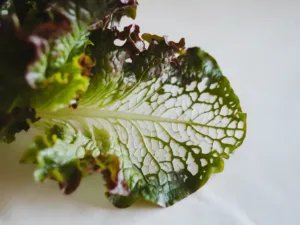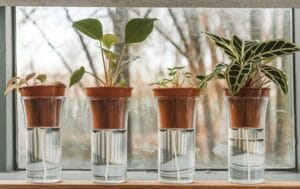Radishes – often overlooked, yet full of potential. This crunchy root vegetable is not only versatile in the kitchen but also a perfect choice for your hydroponic garden. Hydroponic cultivation is a revolutionary method where plants grow without soil. With this method, you can plant radishes year-round and harvest consistently high-quality produce. Sounds interesting? Let’s explore how you can get the most out of your radish cultivation!
In this article, we’ll show you which radish varieties thrive in hydroponics, which systems work best, and how to do everything right from sowing to harvesting. Ready to take your radish cultivation to the next level? Let’s get started!
Which Radish Varieties Are Best Suited for Hydroponics?
Not all radishes are the same. There is a wide variety of types that differ in shape, size, color, and spiciness. Choosing the right variety can make a big difference in your hydroponic success. Here are some varieties that are particularly well-suited for hydroponics:
- Cherry Belle: This popular variety is small, round, and bright red. With its fast growth time of about 22 to 28 days, it is ideal for hydroponics. Cherry Belle is known for its mild flavor and crunchy texture, perfect for salads and raw dishes.
- French Breakfast: An elongated, red-white radish that takes about 25 to 30 days to mature. It has a mild, slightly sweet flavor and is excellent for sandwiches and as a snack. This variety grows well in systems with high humidity.
- Daikon: This Asian radish is much larger and longer than most Western varieties and can take up to 60 days to grow. It has a mild, slightly sweet taste and is particularly suited for fermented dishes or as a side in Asian cuisine. In hydroponics, it thrives in deep water cultures (Deep Water Culture).
- White Icicle: An elongated, white radish that takes about 30 to 35 days. Its flavor is spicy but not too sharp. White Icicle is very resilient and fits well into various hydroponic systems, especially those offering good air circulation.
- Saxa 2: A very fast variety with a maturity time of only 18 to 22 days. It is small, round, and bright red with a mild flavor. Ideal for beginners who want to see quick results.
| Variety | Shape | Flavor | Maturity (Days) | Recommended Systems |
|---|---|---|---|---|
| Cherry Belle | Round | Mild | 22-28 | Nutrient Film Technique (NFT) |
| French Breakfast | Elongated | Mild, sweet | 25-30 | Ebb and Flow |
| Daikon | Elongated | Mild, sweet | 55-60 | Deep Water Culture (DWC) |
| White Icicle | Elongated | Spicy | 30-35 | Aeroponics, NFT |
| Saxa 2 | Round | Mild | 18-22 | NFT, Ebb and Flow |
These varieties offer a good mix of quick yields and interesting flavors, ensuring there’s something for everyone.
Hydroponic Systems for Radish: What Works Best?
Radish is one of the most versatile plants when it comes to hydroponic systems. However, choosing the right system can make the difference between a mediocre and an outstanding yield. Here are some of the best systems for hydroponic radish cultivation:
- Deep Water Culture (DWC): One of the simplest and most popular systems for radishes. The plant roots hang in a nutrient solution enriched with oxygen. This system is particularly suitable for larger varieties like Daikon, as it provides plenty of space for root growth.
- Nutrient Film Technique (NFT): In this system, a thin layer of nutrient solution constantly flows over the plant roots. NFT is particularly good for smaller, fast-growing varieties like Cherry Belle or Saxa 2. It offers excellent oxygen supply and efficient nutrient uptake.
- Ebb and Flow System: This system allows the plant roots to be periodically submerged in a nutrient solution and then dry out. It is ideal for varieties that require good oxygen supply, like French Breakfast or White Icicle.
- Aeroponics: In this advanced system, the plant roots are sprayed with a fine nutrient solution. Aeroponic systems offer excellent oxygen supply and can accelerate growth, but they are somewhat more demanding in terms of maintenance.
| System | Advantages | Disadvantages |
|---|---|---|
| Deep Water Culture (DWC) | Simple, suitable for larger varieties, good root development | Requires regular monitoring of oxygen levels |
| Nutrient Film Technique (NFT) | Efficient nutrient use, ideal for smaller varieties, space-saving | Can cause problems if the pump fails |
| Ebb and Flow System | Good oxygen supply, suitable for many varieties, easy to install | Needs timing control, requires maintenance |
| Aeroponics | Highest growth rates, best oxygen supply | Complex and expensive, requires special knowledge and equipment |
Each system has its strengths and weaknesses, and the choice often depends on the individual requirements and experience of the gardener.
Cultivation: The Foundation for Healthy Radishes
Cultivating radishes is the first step to success and starts with the proper germination of seeds. Radish seeds germinate quickly and require minimal care to sprout. Here are the best practices for cultivating radishes in hydroponics:
- Prepare Seeds: Choose high-quality seeds from reliable suppliers. To increase germination rates, you can soak the seeds in lukewarm water for 12 hours.
- Germination: Use a growing medium like rockwool or coconut fiber. Keep the temperature around 18-24°C and the humidity high to promote quick germination. Radish seeds typically germinate within 3 to 5 days.
- Care for Young Plants: Once seedlings develop their first true leaves, they can be moved to the hydroponic system. Ensure that the nutrient solution initially has a lower EC concentration (about 1.0-1.2) to avoid overwhelming the young plants.
The Ideal Substrate for Your Radishes
Choosing the right substrate is crucial for the healthy growth of your radishes. In hydroponics, there are several options, each with its own advantages and disadvantages:
- Rockwool: A very popular substrate in hydroponics. It offers excellent water retention and good aeration. However, rockwool must be well-soaked before use to stabilize the pH level.
- Perlite: A lightweight, airy substrate that drains well. It is often used in combination with other substrates to improve aeration.
- Coconut Fiber: An organic substrate that retains water well and allows good air circulation. It is more environmentally friendly than rockwool but can affect the pH level, requiring regular measurements.
The choice of substrate often depends on the chosen hydroponic system. For systems like DWC or Ebb and Flow, rockwool is an excellent choice, while for aeroponic systems, lighter substrates like perlite are preferred.
Temperature: The Key to Crunchy Radishes
Temperature plays a crucial role in the healthy growth of radishes. A temperature between 16-24°C is ideal. Too high temperatures can cause radishes to “bolt” and bloom, affecting the taste. Too low temperatures slow growth and can promote the development of fungal diseases.
- Tips for Temperature Control: Use thermometers and climate automation to maintain the ideal temperature. Good ventilation and, if necessary, air conditioning can help ensure consistent temperatures.
Light Requirements for Healthy Radishes
Radishes need sufficient light to grow vigorously, but it doesn’t have to be overly intense. A light requirement of about 12-14 hours per day is sufficient to ensure optimal photosynthesis.
- LED Lighting: LED lamps are energy-efficient and allow control of the light spectrum. For radishes, a balanced spectrum with red and blue components is recommended.
- Placement and Distance: Ensure that the lamps are placed about 30-45 cm from the plants to avoid burns and ensure even light distribution.
The Right pH and EC Levels for Radishes
The pH level and electrical conductivity (EC) of the nutrient solution are crucial for hydroponic radish cultivation. The ideal pH range is 5.8-6.8, while the EC level should be between 1.2-1.8 mS/cm. A too low pH level can cause nutrient blockages, while a too high level can lead to deficiencies.
- Control and Adjustment: Use pH meters and EC meters to regularly check the levels. Use pH-up or pH-down solutions to adjust the pH level accordingly.
The Best Nutrients for Plump Radishes
Radishes require a balanced ratio of nitrogen, phosphorus, and potassium (N-P-K) to grow optimally. Additionally, micronutrients like calcium, magnesium, and iron are important for overall plant health.
- Recommended Nutrient Solution: A balanced hydroponic nutrient solution for leafy greens works well for radishes. Note that young plants require less concentrated solutions than mature plants.
Harvest Time: When and How to Best Harvest Your Radishes
The right time to harvest depends on the variety and growth, but usually falls between 20 and 60 days. A quick glance at size and color helps identify the perfect moment. Radishes should be harvested when they are firm and smooth; overripe specimens can become woody and bitter.
- Harvesting Technique: Gently pull the plants from the substrate or system to avoid damage. Wash the radishes thoroughly and store them in the refrigerator to maintain freshness.
Diseases and Pests in Hydroponic Radish Cultivation
Even in hydroponics, radishes can be affected by diseases and pests. Common problems include root rot, powdery mildew, and aphids.
- Prevention and Control: Keep the system clean, use natural insecticides like neem oil, and regularly monitor for signs of disease. Good ventilation and temperature control are key to preventing fungal diseases.
| Problem | Symptoms | Solution |
|---|---|---|
| Root Rot | Brown, slimy roots | Improved ventilation, water change |
| Powdery Mildew | White coating on leaves | Neem oil, remove affected leaves |
| Aphids | Small, green insects on leaves | Neem oil, insecticidal soap, introduce ladybugs |
Specific Tips for Hydroponic Cultivation
Some additional tips can help you get the most out of your hydroponic radishes:
- Spiciness Control: Radishes tend to become spicier under stress conditions. Keep conditions stable to maintain a mild flavor.
- Nutrient Rotation: Adjust nutrients during the growth phase to promote root development.
Advanced Techniques in Hydroponic Radish Cultivation
For experienced gardeners, advanced techniques can further optimize radish cultivation:
- CO2 Enrichment: Higher CO2 concentrations can promote radish growth. However, this requires careful monitoring.
- Automation: Use sensors and automation systems to maintain constant pH, EC, and temperature levels.
Conclusion: How to Get the Most Out of Your Radish Cultivation
Growing radishes in hydroponics is a rewarding experience that brings you quick harvests and delicious results. With the right variety selection, suitable system, and a bit of patience, you can continuously harvest fresh, crunchy radishes. So, what are you waiting for? Start your own hydroponic radish cultivation now and enjoy the benefits of a healthy and sustainable garden!







